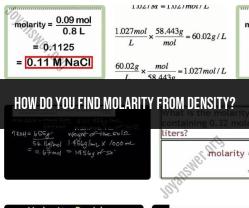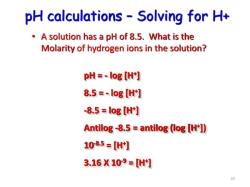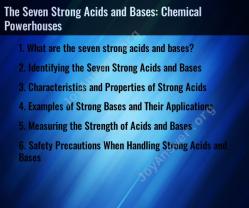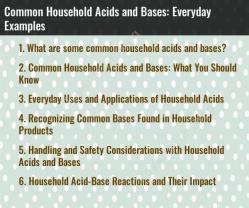Atoms in a Mole: Avogadro's Number Application
Understand the concept of Avogadro's number and how it relates to the number of atoms in a mole in chemistry.
 David Wilson
David Wilson
Chemistry concepts made accessible with clear explanations and examples.
Understand the concept of Avogadro's number and how it relates to the number of atoms in a mole in chemistry.
 David Wilson
David Wilson
Explore the distinctions between molarity and concentration in chemistry. Gain clarity on these fundamental concepts to enhance your understanding of solutions and their properties.
 Emily Rodriguez
Emily Rodriguez
Explore the significance of KC in chemistry, which represents the equilibrium constant for reactions in terms of concentrations.
 Sarah Johnson
Sarah Johnson
Gain insights into KC and KP, which are equilibrium constants used to quantify the extent of chemical reactions at equilibrium.
 Sarah Johnson
Sarah Johnson
Delve into the concept of equilibrium constants in chemical reactions. Understand the significance of equilibrium constants and their role in quantifying the degree of reaction completion. Learn how to calculate equilibrium constants using concentration or pressure terms.
 David Wilson
David Wilson
Understand the fundamentals of the molarity equation, an essential tool for calculating the concentration of a solution in chemistry.
 David Wilson
David Wilson
Learn how to calculate the molarity of a solution with a step-by-step guide, a fundamental skill in chemistry for determining concentration.
 Michael Chen
Michael Chen
Unravel the molecular composition of 18g of H2O by applying Avogadro's number and molar mass concepts. Discover the number of water molecules present in the given mass and gain insights into the fundamental role of Avogadro's number in quantifying substances on a molecular scale.
 Michael Chen
Michael Chen
Learn about the elements that make up sodium hypochlorite. Understand the chemical constituents of this compound and its relevance in various applications.
 Jessica Park
Jessica Park
Differentiate between sodium hypochlorite and chlorine. Learn whether sodium hypochlorite and chlorine are the same chemical or if they have distinct characteristics.
 David Wilson
David Wilson
Understand whether sodium hypochlorite is considered a carcinogen. Explore its potential health risks and its classification in terms of carcinogenicity.
 Sarah Johnson
Sarah Johnson
Explore the properties of sodium acetate and its classification as a solvent. Learn whether sodium acetate is considered an organic solvent and gain insights into its chemical characteristics.
 Emily Rodriguez
Emily Rodriguez
From atomic structure to reactions and lab techniques, our chemistry guides help students and learners grasp core principles.

October 18, 2023

September 9, 2023

November 14, 2023

October 21, 2023

October 25, 2023

October 25, 2023
Get the latest education guides and insights delivered straight to your inbox every week.
We respect your privacy. Unsubscribe at any time.